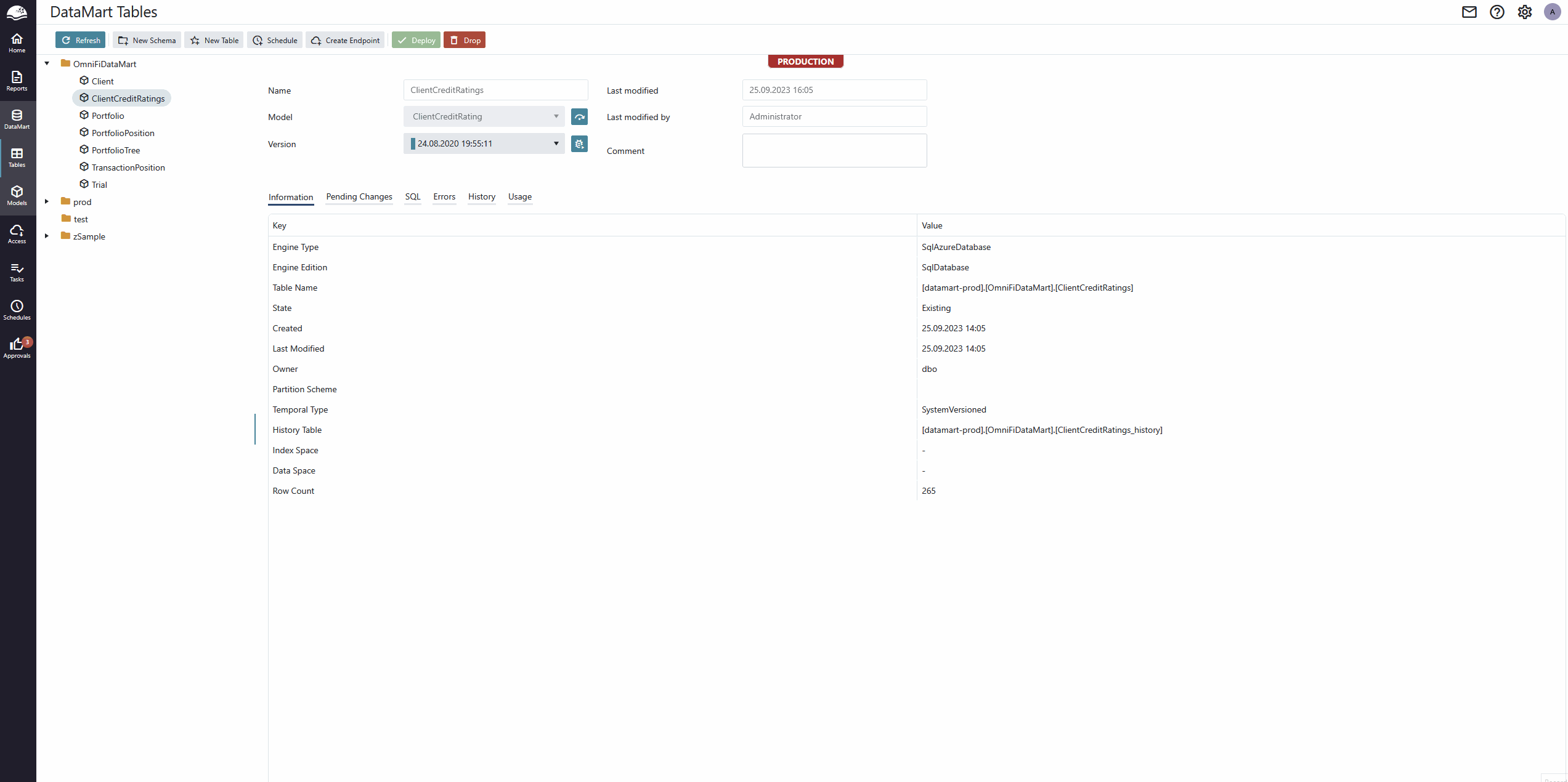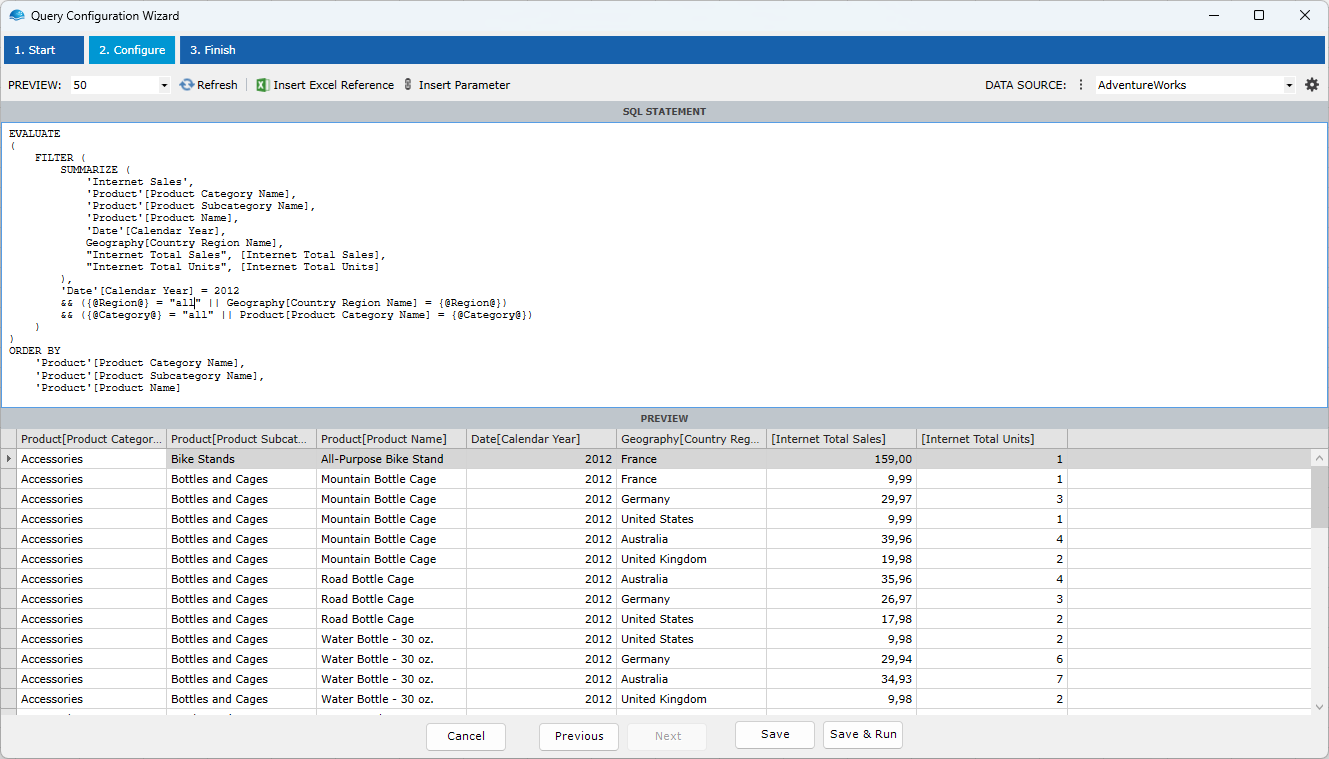Major Release: OmniFi v9.4
OmniFi v9.4
With v9.4, we extend on OmniFis ability to integrate and connect to data sources by introducing new functionality to publish your OmniFi DataMart tables over our OmniFi Access API, additional database queries and a much improved OmniFi Access query.
We have also added a few additional security features and options, as well as tightened validations for additional security.
OmniFi Access and DataMart joins forces
Our mission since the beginning almost 20 years ago has been to provide you with access to your information, regardless of how and where it is stored, in the way that is most convenient for you.
OmniFi Access lets you publish information from anywhere in your organization, access it in simple, standardized ways, and make use of it in reports, dashboards, wall screens, interfaces, scripts and many other applications.
OmniFi DataMart allows you to collect data from anywhere in your system landscape and store for fast and centralized access, version handle it for change management and auditability, and define time series for analysis. Effectively create your own custom mini-data warehouse solution, without coding, without having to bother with the underlying technology, and at a fraction of the cost of building it from ground up.
Now Access and DataMart joins forces, DataMart tables can be published automatically over OmniFi Access with just a few clicks!
Click a button, type in a name, define permissions, and your data will be immediately available in OmniFi Access.

OmniFi DataMart table published to Microsoft Power BI in 15 seconds.
We call these Table Endpoints, and they support custom filtering as well as querying historical versions. Database queries are generated automatically in the background for every request, all you need to do is to hook up a good front end tool like OmniFi Access query, QlikSense, Tableau or Microsoft Power BI.
The best thing is, it takes just a few seconds to make your DataMart data accessible from anywhere, without having to bother with database connections or writing SQL code!
The query side
To go along with the new OmniFi Access DataMart APIs, and make better use of them and other APIs you publish over Access in OmniFi reports, we have given the OmniFi Access query a substantial facelift. With an improved workflow and handy new features, it is more powerful and easier to use than ever.

OmniFi Access query used to read a DataMart table API.
The new preview lets you quickly gauge what information is available. You can add filters directly from the preview data, and enhance them using the convenient Conditions editor. Making use of OmniFi Access and DataMart data is now a more pleasant and convenient experience.
Databases data at your fingertips
While the technical side of the industry has been steadily on the move towards SaaS solutions and API's for a long time, much information is still stored on premise, in good old-fashioned databases. For some, it's that legacy system that does just a little too good job to get replaced, for others it is the old home-built analysis database in MS Access that you haven't found a good match for in the market.
For the technically inclined, we have added several different additional options to query database data, without the hassle of adding and maintaining ODBC connections.

OmniFi used to bring in data from a Microsoft Analysis Services OLAP cube.
The SQL Server query enables you to query Microsoft SQL Server databases, the Analysis Services query provides access to Microsoft Analysis Services OLAP cubes, and lastly the OLEDB query provides general access to various compatible databases, including Microsoft Access. All queries of course support full parameterization.
Locked and secure
Everyone's favorite kind of security is the kind that is ubiquitous yet invisible.
With v9.4 we have added a new allow-list for OIDC authentication callbacks, enabled secure defaults including Strict-Transport-Security and Content-Security-Policy and tightened up validations and internal API's to further enhance security.
We sincerely hope you don't even notice!